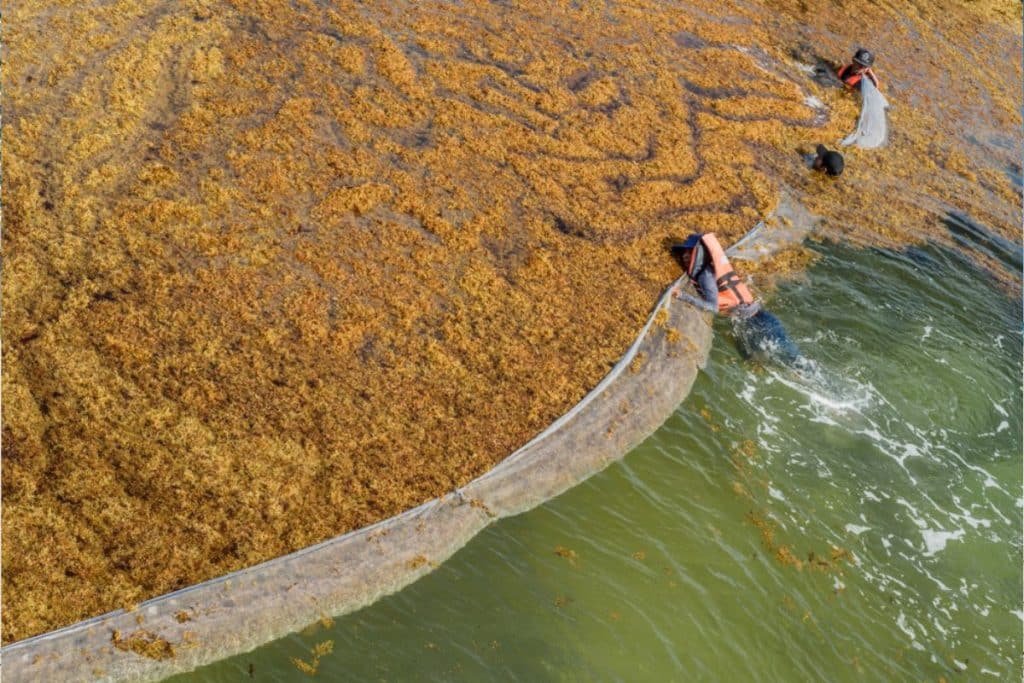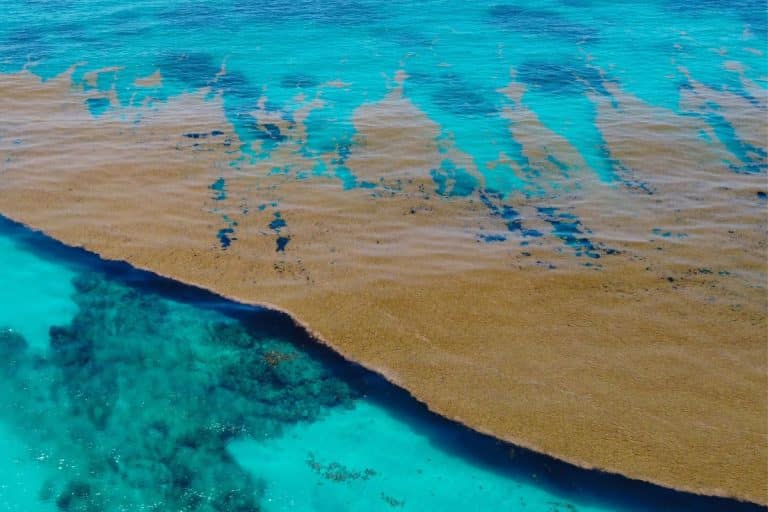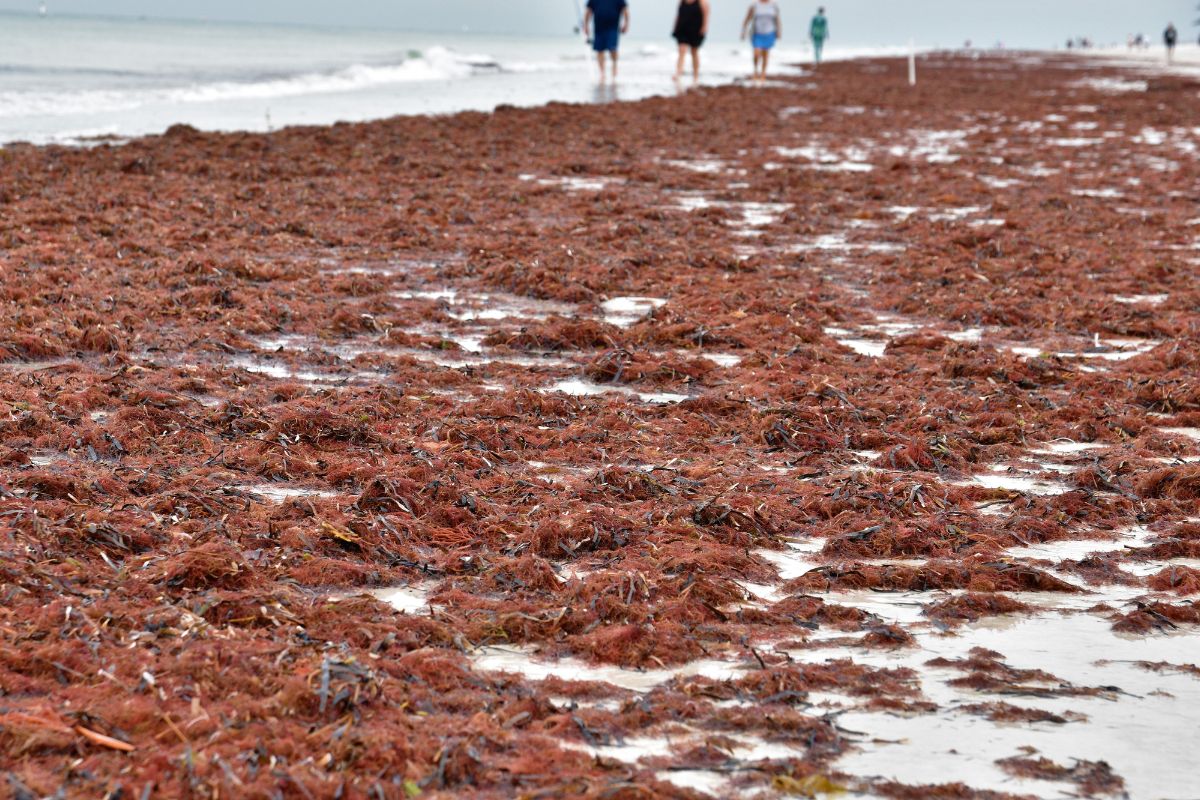The Caribbean coasts of Florida, Mexico, the Dominican Republic and other countries are threatened by a huge mass of sargassum seaweed that has accumulated in the Atlantic Ocean. This mass might put a significant damper on the tourist season.
Sargassum has long formed substantial blooms in the Atlantic, and scientists have observed enormous accumulations since 2011. However, this year’s sargassum bloom, which spans more than 5,000 miles from the coast of Africa to the Gulf of Mexico, may be the largest in history.
Join our FB group where Florida’s locals and tourists post the latest photos and updates on Sargassum Seaweed in the area
Dr. Brian Lapointe, a researcher at Florida Atlantic College’s Harbor Branch Oceanographic Institute, predicts the algae will be seen on Florida beaches beginning in July as the patch, currently moving westward, makes its way through the Caribbean and up into the Gulf of Mexico this summer.
According to Lapointe, this year’s Sargassum bloom started early and doubled in size between December and January. Lapointe told CNN’s Rosemary Church that the mass “was larger in January than it has ever been since this new region of sargassum growth began in 2011.”
“This is an entirely new oceanographic phenomenon that is creating such a problem — really a catastrophic problem — for tourism in the Caribbean region where it piles up on beaches up to 5 or 6 feet deep,” Lapointe added.
He mentioned that people in Barbados were utilizing “1,600 dump trucks a day to clean the beaches of this seaweed to make it suitable for tourists and recreation on the beaches.”
Why 2023 is the year of sargassum

According to Dr. Gustavo Jorge Goni, an oceanographer at the National Oceanic and Atmospheric Administration’s Atlantic Oceanographic and Meteorological Laboratory, the abundance of algae can change from year to year depending on ecological factors influenced by changes in nutrients, precipitation and wind patterns. This is similar to the way plants and crops on the ground can change from year to year.
According to Goni, ocean currents can also affect annual growth and the amount of sargassum that accumulates. The ocean contains both phosphorus and nitrogen, which the algae can use for food.
Lapointe discovered that nitrogen concentrations had increased by 45% after taking samples from the region where the sargassum originated and compared them to earlier samples from the 1980s. The tremendous growth of the bloom, the researchers said, is likely due to this increase.
According to the Environmental Protection Agency, rivers that are polluted with phosphorus and nitrogen from human activities such as agriculture and fossil fuel production can discharge these substances into the ocean.
Goni also warns that since research into these sargassum accumulations is still in its infancy, it’s conceivable that knowledge of the growth of the algae will change over time.
“Whatever we believe we know today, it may change tomorrow,” he said.






